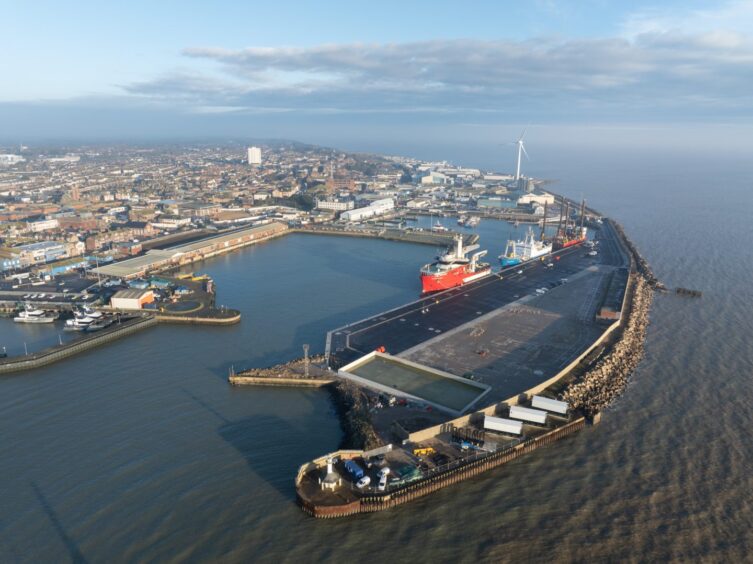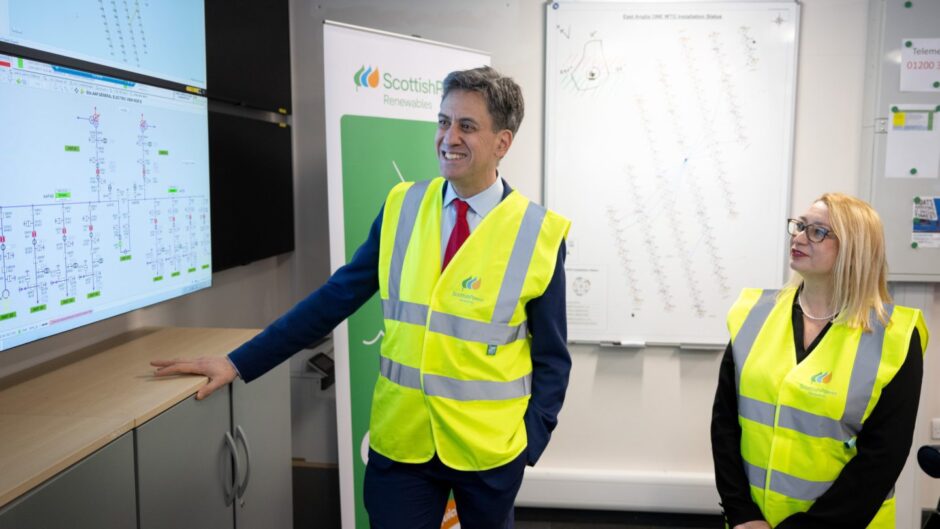 © Supplied by ABP
© Supplied by ABP Associated British Ports (APB) has unveiled a newly-completed £35million port investment at Lowestoft.
Energy secretary Ed Miliband officially opened the newly completed Lowestoft eastern energy facility (LEEF) at ABP’s Port of Lowestoft on Thursday. The facility is designed to serve one of the country’s largest clusters of offshore wind farms in the UK.
ABP said the LEEF development features expanded quay space and deepwater berthing, with each berth equipped with bunkering capacity, water and electricity connectivity. This infrastructure is designed to support operations and maintenance (O&M) activities and offer construction support for the offshore energy industry.
LEEF has been operational since September, with construction completed in November and the project handed over at the time by contractor McLaughlin & Harvey. According to previous announcements made recently by McLauchlin & Harvey, the facility also features up to 8 acres of operational and storage space, adaptable for covered and open storage, marshalling, equipment laydown for O&M and future construction phases. Berth pockets were designed to have a minimum depth of 25ft (7.5 metres) in order to allow Lowestoft to accommodate the “next generation of offshore support vessels”, the contractor said.
Lowestoft, in Suffolk, is the easternmost town in the UK and the port is located close to one of the country’s largest clusters of offshore wind farms. By developing LEEF, ABP hopes to secure the port’s role as a hub for supporting offshore energy, while also boosting its own role as an enabler of the energy transition.
“Ports are a crucial foundation, not just for delivering the energy transition, but also for realising investment and jobs for the UK,” stated ABP’s CEO, Henrik Pedersen.
Wind power company presence at the Port of Lowestoft includes ScottishPower Renewables (SPR), which uses the port as its main operations and maintenance hub for its East Anglia One offshore wind farm. Miliband’s visit to open LEEF included a tour of SPR’s control room for East Anglia One.
SPR is currently expanding its wind power presence in the region. East Anglia One is operational, East Anglia Three is under construction and supply chain is now being put in place for East Anglia Two. The wind farms represent a combined investment of £9b.
“The opening of LEEF significantly strengthens what Lowestoft can offer developers and supply chain alike to help bring clean energy projects like our East Anglia windfarms to life and deliver real and lasting benefits for local people and businesses,” stated SPR’s managing director for offshore, Ross Ovens.
During his visit to the Port of Lowestoft, Miliband also boarded the Grampian Tweed vessel, the latest addition to North Star’s fleet, which arrived in Lowestoft on January 14. The Grampian Tweed is a hybrid electric service operation vessel (SOV) that was designed to support Equinor’s operations at the Dogger Bank offshore wind farm.
The Towns Fund, a government facility for investing in towns as part of a plan to “level up” UK regions, contributed £2.3m towards the development of LEEF. ABP funded the remainder of the project’s costs as part of its programme of investing in its ports, which has totalled around £1b over the past five years. Miliband welcomed LEEF as a private sector investment that he described as a “huge vote of confidence in our mission, supporting economic growth in the region and supporting a new era of clean electricity”.
ABP’s investment programme is set to continue. The organisation said it has a “very significant and highly ambitious” pipeline of major projects, with energy transition infrastructure playing a major role in this. Such infrastructure includes plans to invest over £500m to repurpose the port of Port Talbot, Wales, enabling it to service the floating offshore wind (FLOW) industry. Another planned project is the Immingham green energy terminal, which is aimed at unlocking billions of pounds in investment in green hydrogen, ammonia and carbon capture and storage (CCS) infrastructure.

